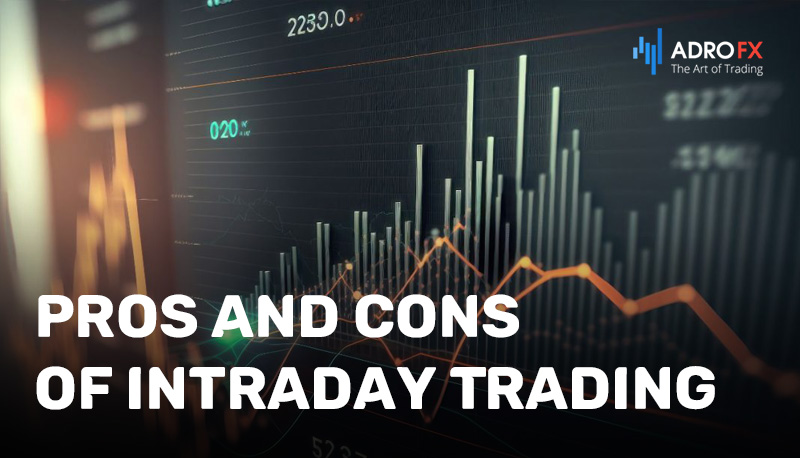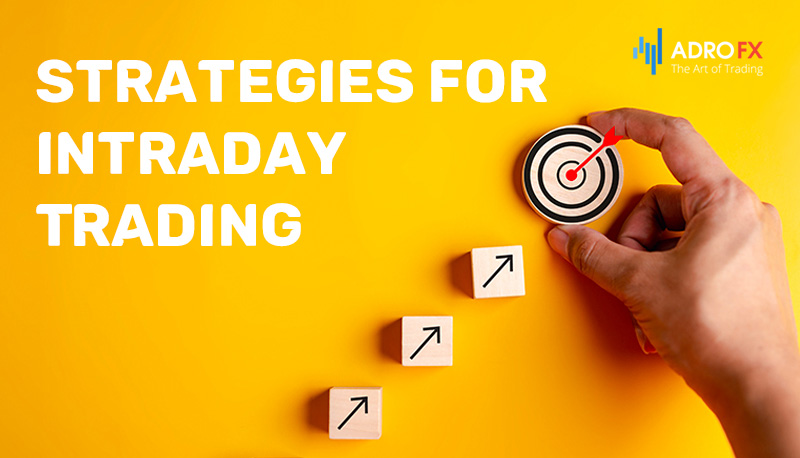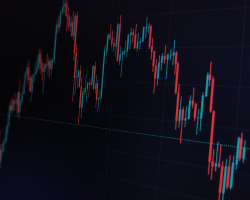A Comprehensive Guide to Successful Intraday Trading: Strategies, Pros and Cons, and More

In the fast-paced world of finance, where markets are constantly in motion, intraday trading has emerged as a dynamic and exhilarating approach to trading financial instruments. Unlike traditional investing, which often involves holding assets for the long term, intraday trading, commonly known as day trading, revolves around capitalizing on short-term price movements that unfold within minutes, hours, or even seconds.
This comprehensive guide is your gateway to understanding the intricate realm of intraday trading. We will delve into the strategies, explore the pros and cons, and provide invaluable insights to help you navigate this high-reward, high-risk trading environment successfully.
What Is Intraday Trading?
Intraday trading, often referred to as day trading, is a type of trading activity in the financial markets where traders buy and sell financial instruments within the same trading day. Unlike traditional investing, where investors hold assets for the long term, intraday traders aim to profit from short-term price movements that occur within minutes, hours, or even seconds. Here are some key characteristics and aspects of intraday trading:
- Low Time Frame
Intraday traders have a keen eye on the clock, as they primarily operate within low time frames, typically spanning from mere minutes to a few hours. Their goal is to harness the often frenetic price fluctuations that unfold within these brief windows of opportunity. - Day-End Position Closure
One hallmark of intraday trading is the practice of never holding positions overnight. Instead, traders meticulously close out all their positions before the trading day comes to a close. This strategy shields them from the inherent risks associated with holding assets overnight, such as price gaps that can catch traders off guard when markets reopen. - High Volume Trading
Intraday traders thrive on high trading volumes. They execute a multitude of buy and sell orders throughout the trading day. This frequent trading activity allows them to capitalize on the rapid ebbs and flows in prices that characterize short-term market movements. - Volatility
Intraday traders are drawn to market volatility like bees to honey. They see higher volatility as a breeding ground for trading opportunities. When prices swing swiftly and sharply, intraday traders employ a variety of strategies to profit from these fluctuations, making the most of price swings within low time frames. - Technical Analysis
Technical analysis forms the bedrock of intraday trading. Traders pore over charts, scrutinize technical indicators, and identify patterns to inform their trading decisions. Popular indicators, such as moving averages, relative strength index (RSI), and stochastic oscillators, serve as their compass in the volatile market waters. - Risk Management
Successful intraday traders know the importance of managing risk effectively. They set Stop Loss and Take Profit orders to both limit potential losses and secure profits. Every trade they embark on is accompanied by a carefully considered risk-reward ratio to ensure prudent decision-making. - Liquidity
- Intraday traders prefer to swim in the deep end of the liquidity pool. They gravitate toward highly liquid assets like major stocks, currency pairs, and commodities. This liquidity preference ensures they can execute trades swiftly, without unduly impacting the asset's price.
- Constant Monitoring
Intraday traders lead lives in sync with the markets. They are glued to their screens throughout trading hours, vigilantly monitoring price movements, economic news, and events that could sway the market in a matter of moments. This constant watchfulness enables them to make timely adjustments to their strategies. - Emotional Discipline
The fast-paced realm of intraday trading can be emotionally taxing. The stakes are high, and emotions like fear and greed can cloud judgment. Therefore, maintaining emotional discipline is paramount. Successful intraday traders stick to their trading plans, steer clear of impulsive decisions, and navigate the market with unwavering resolve. - Capital Requirements
Adequate capital is a prerequisite for intraday trading. Traders must have sufficient funds to meet margin requirements and absorb potential losses. Caution prevails in managing capital, as overleveraging can expose traders to excessive risk.

Pros and Cons of Intraday Trading
Intraday trading presents traders with a set of distinct advantages and disadvantages. Understanding these aspects is pivotal for those contemplating this active trading approach.
Pros of Intraday Trading
One of the alluring facets of intraday trading is its potential to deliver quick profits. Intraday traders specialize in capitalizing on short-term price movements, often resulting in swift gains. Successful intraday trades can yield daily profits, making it an attractive endeavor for those seeking immediate returns.
Another advantage of intraday trading is the avoidance of overnight risk. Intraday traders diligently close all their positions by the end of the trading day. This practice shields them from the uncertainties associated with overnight market events, such as unexpected news releases or price gaps that can catch traders off guard when markets reopen.
Liquidity is a paramount consideration for intraday traders. They frequently gravitate toward liquid assets, such as major stocks and currency pairs. The abundance of liquidity in these markets allows traders to buy and sell in large quantities without significantly perturbing market prices.
Intraday trading is characterized by high trading frequency. Traders execute multiple trades within a single trading day, offering numerous opportunities to profit from short-term price fluctuations. This heightened activity level can contribute to the potential for increased gains.
Unlike longer-term investors, intraday traders are not burdened with holding costs. Since they do not maintain positions overnight, they are exempt from incurring costs like interest or dividends associated with holding assets for extended periods.
Intraday traders enjoy reduced exposure to longer-term market risks. By closing their positions at the end of each trading day, they insulate themselves from the potential impact of geopolitical events or extended economic downturns that can unfold over more extended time frames.
Cons of Intraday Trading
Intraday trading carries an inherent element of risk. The short-term nature of trades, combined with the potential for rapid and unpredictable price fluctuations, exposes traders to the possibility of significant losses. A single unfavorable trade can have a substantial adverse impact on their capital.
The fast-paced environment of intraday trading can be a double-edged sword. While it presents opportunities for quick profits, it also poses challenges. The constant need to make rapid decisions and monitor markets throughout the trading day can be emotionally taxing. Fear and greed can lead to impulsive actions that result in losses.
Frequent trading, a hallmark of intraday trading, can translate into higher commission costs and fees. These costs can erode profits, particularly for traders with limited capital. It's essential to carefully consider the cost structure of one's trading activities.
Intraday traders often place heavy reliance on technical analysis. While technical indicators and chart patterns are valuable tools, they may not always provide accurate predictions of price movements. Overreliance on these indicators can lead to unexpected losses.
The fast pace of intraday trading may limit the time available for in-depth research and analysis. Traders must make decisions swiftly, potentially resulting in uninformed or rushed choices.
Intraday trading is time-consuming. Traders need to commit a significant amount of time and attention during trading hours, making it a demanding endeavor that requires vigilance.
Sufficient capital is a prerequisite for intraday trading. Traders must have the financial resources to meet margin requirements and absorb potential losses. Overleveraging, or trading with excessive leverage, can expose traders to significant financial risks.
Lastly, intraday traders often concentrate on a few select assets, limiting their diversification compared to long-term investors who maintain a broader portfolio. This lack of diversification can amplify risks associated with individual assets.

Strategies for Intraday Trading
In the world of intraday trading, a multitude of strategies is employed by traders to navigate the fast-paced markets and seize profit opportunities. These strategies are diverse in their objectives and execution:
Scalping
Scalpers are traders with a penchant for making rapid, albeit modest, profits through a high volume of trades within a single day. They operate on incredibly low time frames, often mere seconds or minutes. The scalping game is all about pinpointing the tiniest price fluctuations and executing trades with lightning speed. Successful scalpers rely on markets with high liquidity and tight spreads, demanding not only swift execution but also a disciplined approach to risk management.
Day Trading
Day traders have a slightly higher time frame in mind, holding positions for minutes to hours within the same trading day. They are masters of technical analysis, hunting for short- to medium-term trends. Day traders are often on the lookout for technical patterns like breakouts, pullbacks, and reversals. Their strategies involve setting precise entry and exit points, often accompanied by Stop Loss and Take Profit orders to effectively manage risk.
Momentum Trading
Momentum traders are on a quest to harness the energy of strong price movements associated with trending assets. They favor assets that have exhibited robust recent price performance and boast significant trading volume. Momentum traders embark on trades in the direction of the prevailing trend, betting that the momentum will continue to propel prices. Technical indicators such as moving averages and the relative strength index (RSI) are their allies in identifying promising momentum opportunities.
Swing Trading
Swing traders have a slightly longer attention span, with positions held for a few days to weeks. They are hunters of short- to medium-term price swings. These traders meticulously analyze charts to identify potential reversals or corrections within broader trends. Timing is critical, as they seek to enter trades at the onset of a swing and exit when they anticipate the swing's conclusion. Some swing traders may even hold positions overnight.
Mean Reversion
Mean reversion traders set their sights on assets that have significantly deviated from their historical averages and anticipate a return to those averages. They employ technical indicators such as Bollinger Bands, the Relative Strength Index (RSI), or Stochastic oscillators to identify overbought or oversold conditions. When an asset appears overextended, these traders may take positions in the expectation of a reversal to the mean.
Breakout Trading
Breakout traders are opportunists who capitalize on substantial price movements triggered when an asset breaches a defined trading range or pattern. They closely monitor support and resistance levels, scrutinize chart patterns like triangles or rectangles, and keep a watchful eye on key technical indicators. When an asset convincingly breaks above resistance or below support, it swiftly enters trades aligned with the breakout direction.
News-Based Trading
News-based traders are like market detectives, reacting swiftly to significant economic releases, corporate earnings reports, and news events that can instantaneously stir price movements. These traders stay plugged into economic calendars and breaking news, ready to pounce on trading opportunities driven by the expected impact of unfolding events. Their trades are typically short-lived, necessitating rapid decision-making.
Pairs Trading
Pairs traders engage in a balancing act, simultaneously buying and selling two correlated assets. Their objective is to profit from the relative price movements between the two assets. Pairs traders identify assets with historical correlations and patiently await deviations in their prices. When one asset outperforms the other, they go long on the underperforming asset and short the outperforming one, anticipating a reversion to the historical mean.
Algorithmic Trading
Algorithmic traders are the technophiles of the trading world, employing computer algorithms to automate trading decisions according to predefined rules and criteria. These algorithms are adaptable, with strategies tailored for diverse objectives, including arbitrage, market making, and trend following. The hallmark of algorithmic trading is its autonomy, often executing trades with minimal human intervention.
Intraday traders select from this arsenal of strategies, choosing the one that aligns best with their market insights and risk appetite as they navigate the ever-changing tides of the financial markets.
Conclusion
Intraday trading can be highly profitable for skilled and disciplined traders, but it also carries a significant level of risk. It requires a deep understanding of the financial markets, trading strategies, technical analysis, and risk management. Traders often start with a demo account or a small portion of their capital to gain experience before engaging in full-scale intraday trading. Additionally, it's essential to be aware of the potential for substantial losses and to trade within one's risk tolerance.
About AdroFx
Established in 2018, AdroFx is known for its high technology and its ability to deliver high-quality brokerage services in more than 200 countries around the world. AdroFx makes every effort to keep its customers satisfied and to meet all the trading needs of any trader. With the five types of trading accounts, we have all it takes to fit any traders` needs and styles. The company provides access to 115+ trading instruments, including currencies, metals, stocks, and cryptocurrencies, which make it possible to make the most out of trading on the financial markets. Considering all the above, AdroFx is the perfect variant for anyone who doesn't settle for less than the best.










